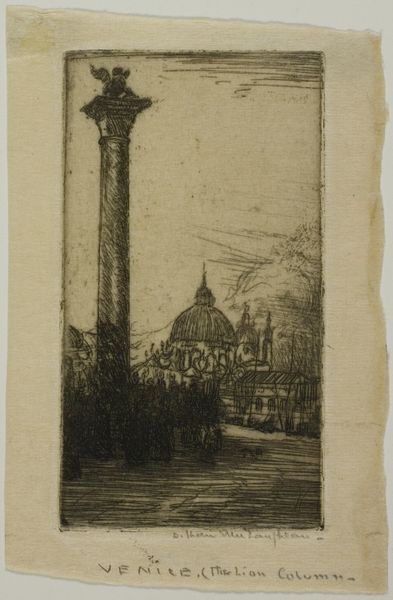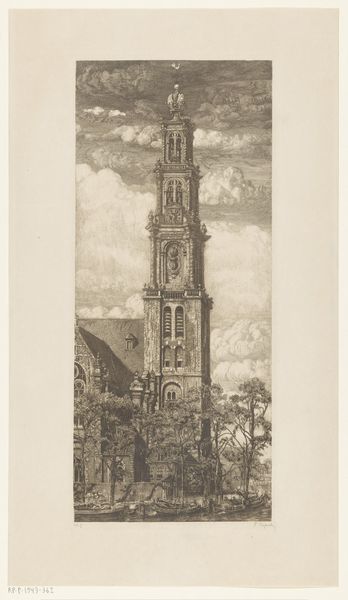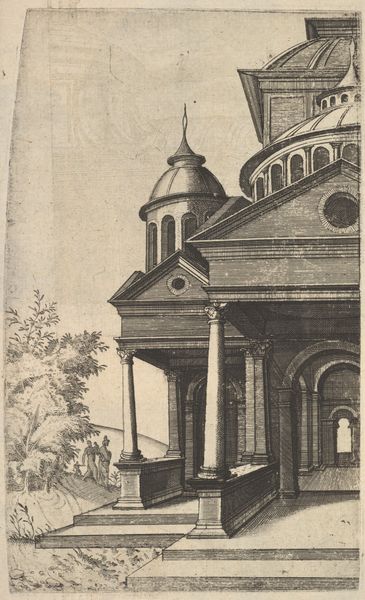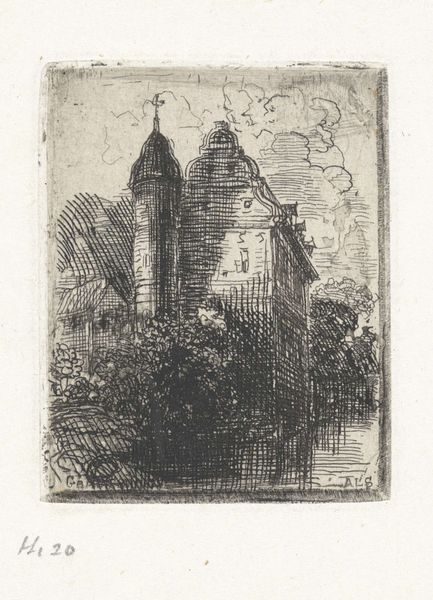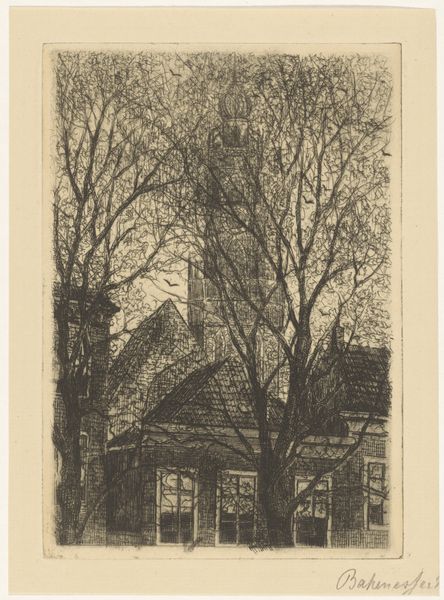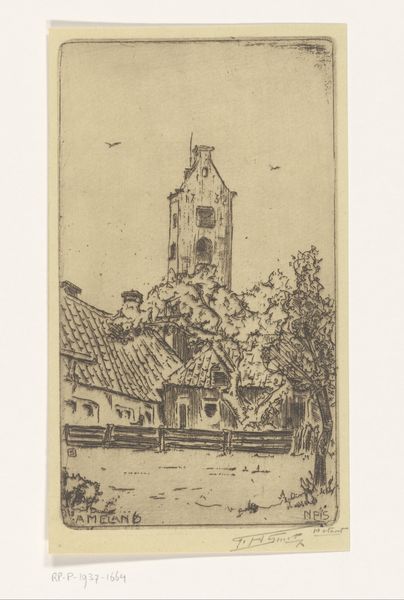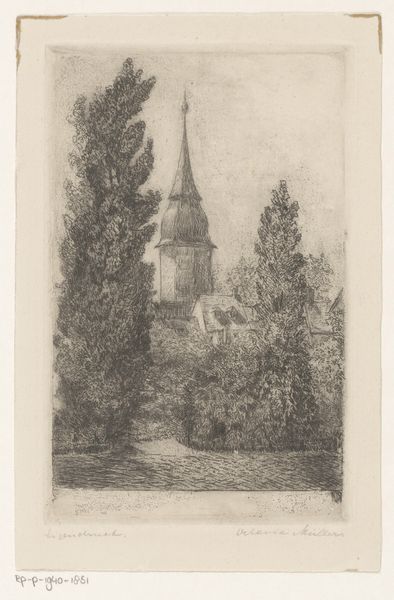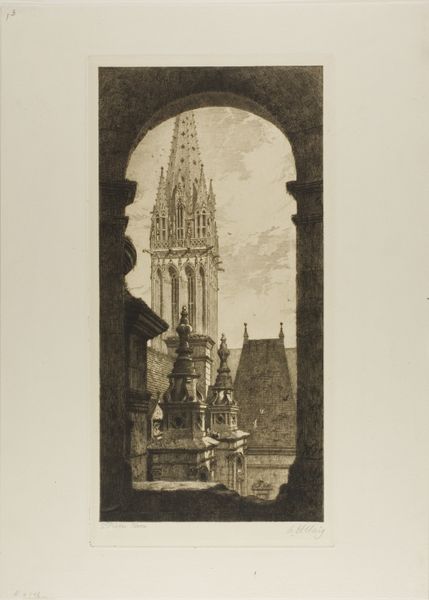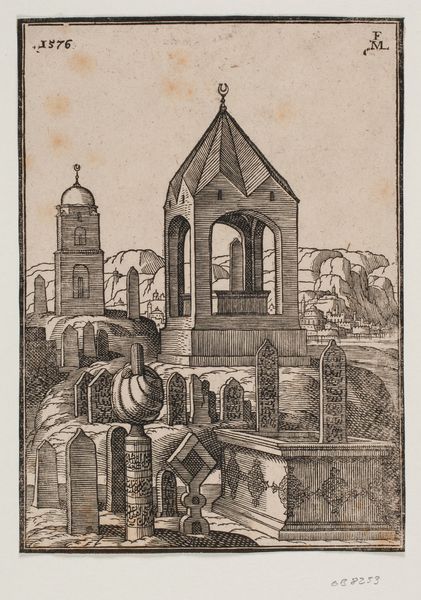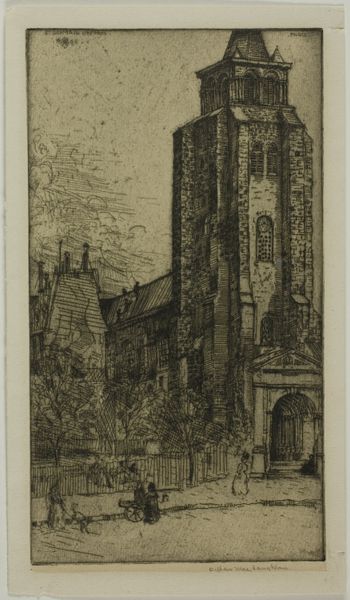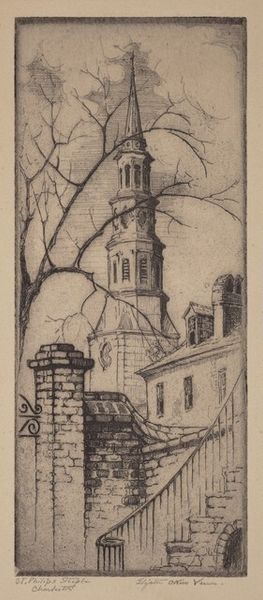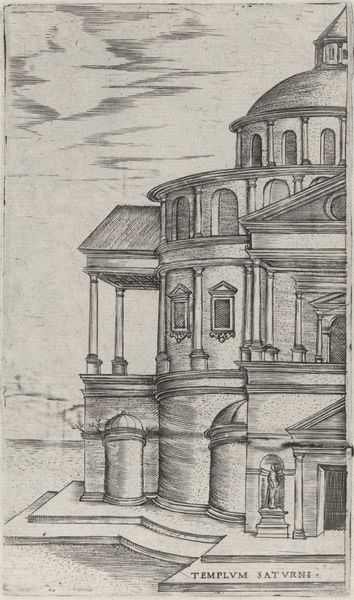
drawing, etching, paper, ink
#
drawing
#
ink painting
#
etching
#
landscape
#
paper
#
ink
#
geometric
#
cityscape
Dimensions: 94 × 51 mm (image/plate); 99 × 54 mm (sheet)
Copyright: Public Domain
Editor: So, this is Donald Shaw MacLaughlan's "Lion Column, Venice" from 1899. It's an etching in ink on paper, and it really strikes me how the imposing darkness of the column contrasts with the delicacy of the Venetian skyline. It feels like a commentary on power and fragility. How do you interpret this work? Curator: It’s interesting that you pick up on that contrast. I think MacLaughlin's choice to focus on the Lion Column isn’t accidental. Venice, by the late 19th century, was becoming heavily laden with its own historical image and reputation, increasingly manufactured for tourism. The Lion Column is one of the city’s potent symbols. To render it in such a stark way, as you said, contrasts sharply with the dissolving image of Venice behind. Doesn’t that make you think about how artists engage with popular ideas and postcard views, intentionally or unintentionally reinforcing certain perceptions while perhaps challenging others? Editor: Absolutely, I can see how that plays out here! It's almost as if he’s showing us the real weight of Venetian history, not just the romanticized version. The etching style also feels quite modern for its time. Curator: Precisely! Etchings like this one became increasingly popular in the late 19th century, and were often collected and exchanged. It became a marketable reflection of culture that could also serve to create culture, informing ideas about cities and other parts of the world. I think MacLaughlin is part of that trend, but his unique visual style adds a certain unease. It’s not your typical, pretty souvenir. How does that affect your view of it? Editor: That definitely enriches my understanding! I initially just saw a nice landscape, but thinking about the societal impact and how this piece contributed to it gives it so much more meaning. Curator: Exactly, and that's the power of art: it can be both a product and a producer of culture. Thanks for bringing that insightful observation. Editor: And thank you for that context. It really made me think differently about the relationship between art and society.
Comments
No comments
Be the first to comment and join the conversation on the ultimate creative platform.
